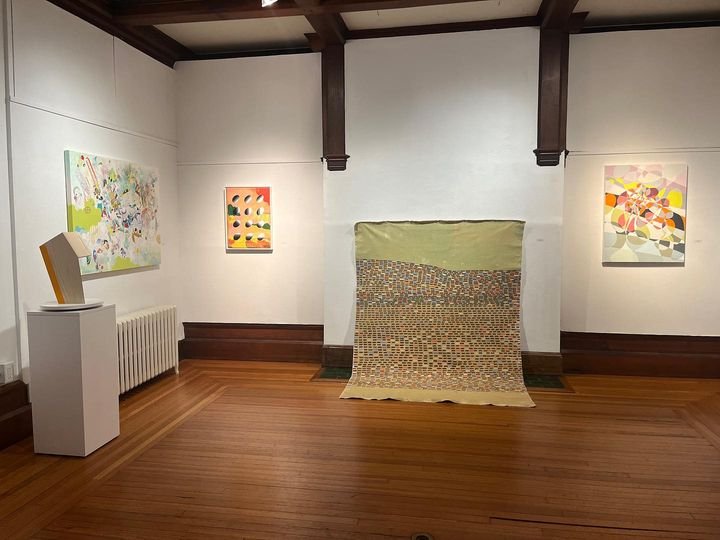Edge Detectors in the Wild
2022
Mirror Material, Southern Exposure, San Francisco
curator Tiger Strikes Asteroid, 2022
Photo credit: Minoosh Zomorodinia
Frequency Shift
Oil on canvas. 12"x12". 2022
This project was commissioned by Southern Exposure of San Francisco.
Frequency Shift
Detail
Filter Bank Interior/Exterior
Oil on linen. 24"x18". 2022
V1 Brain
Oil on linen. 24"x18". 2022
Frequency Channels
Oil on linen. 24"x18". 2022
Vertical Sensitivity
Oil and acrylic on canvas. 12"x12". 2022
Vertical Sensitivity
Detail
A Way of Seeing Everything & Nothing, Ely Center of Contemporary Art, New Haven, CT
curator Something Projects
2023
About the series
AI visual perception is both timely and timeless. The timeliness is due to AI’s rapid and pervasive evolution, and potential for real-world consequences to our society and planet. The timelessness is due to artificial neural networks entwinement with biological neural networks, which they aim to emulate. Both types of neural network share the process of repeatedly abstracting light while searching for pre-learned visual patterns. These patterns are archetypal forms, unconsciously embedded in our visual world, which both optimize and bias perception. I collect these specimens from artificial neural networks and overlay them in grids, reminiscent of bullet holes, referencing the now ubiquitous technical process an AI uses to scan our lives’ pixels.
My paintings imagine the interior experience of an AI as it uses these motifs to make sense of the human and natural worlds — the original “training dataset” for the evolution of human vision. My process starts by first employing AI algorithms to detect contours and identify objects in landscape photographs from my Bay Area surroundings. I then embody the discarnate AI by painting with my human hands, further entwining its percepts with my own. I record the algorithm’s output legend on the rear side of many of the canvases, its obscured visibility analogous to corporate AI algorithms’ opacity.
The title for the series — Edge Detectors in the Wild — alludes not just to the landscape imagery, but also to the “in the wild” deployment of AI algorithms beyond their controlled training conditions. Such uncontrolled deployment scenarios are increasingly prevalent, despite the concern about the unpredictable nature of AI in the wild and unforeseen consequences.








